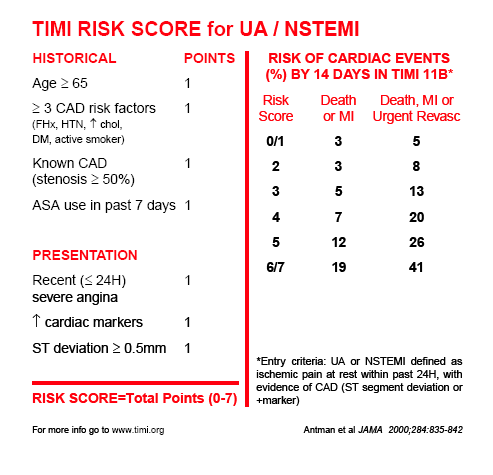
Patients were randomized to one of three treatment groups: High Dose Regimen, Low Dose Regimen, & Warfarin.Įdoxaban versus warfarin in patients with atrial fibrillation
ST-segment deviation of ≥0.The purpose of this study was to demonstrate the safety and efficacy profile, in two different dose regimens of DU-176b, (an investigational new drug being tested for the prevention of stroke/systemic embolic events (SEE)), in individuals with atrial fibrillation. Severe angina (e.g., >2 angina events in past 24 h or persisting discomfort) (1 point). Significant coronary stenosis (stenosis >50%) (1 point). Use of aspirin in the past 7 days (1 point). family history of coronary artery disease. Three or more risk factors for coronary artery disease: (1 point). Slightly elevated cardiac TnT, TnI, or CK-MB (e.g., TnT >0.01 but 65 yrs (1 point) T-wave changes, pathologic Q waves, or resting ST depression 0.1 nanogram/mL) New or worsening mitral regurgitation murmurĪngina at rest with transient ST-segment changes >0.5 mm Pulmonary edema, most likely due to ischemia New-onset or progressive Canadian Cardiology Society Class III or IV angina in the past 2 wk without prolonged (>20 min) rest pain but with intermediate or high likelihood of CAD New-onset angina with onset 2 wk to 2 mo before presentation Rest angina (>20 min) or relieved with rest or sublingual nitroglycerin Increased angina frequency, severity, or duration Prolonged (>20 min) rest angina, now resolved, with moderate or high likelihood of CAD Prior myocardial infarction, peripheral or cerebrovascular disease, or coronary artery bypass grafting prior aspirin use Low Likelihood (no high- or intermediate-risk feature, but may have any of the following)Īccelerating tempo of ischemic symptoms in preceding 48 h Intermediate Likelihood (no high-risk feature, but must have one of the following) High Likelihood (at least one of the following features must be present) New, or presumably new, transient ST-segment deviation (1 mm or greater) or T-wave inversion in multiple precordial leadsĮlevated cardiac troponin I, troponin T, or MB fraction of creatine kinaseĬomposite Outcome: Death or Nonfatal Myocardial Infarction by Risk Stratification in Patients with Unstable Angina Feature Transient mitral regurgitation murmur, hypotension, diaphoresis, pulmonary edema, or rales Known history of coronary artery disease, including myocardial infarction Probable ischemic symptoms in absence of any of the intermediate-likelihood characteristics Low Likelihood (absence of high- or intermediate-likelihood features but may have)Ĭhest or left arm pain or discomfort as chief symptom reproducing prior documented anginaĬhest or left arm pain or discomfort as chief symptom Intermediate Likelihood (absence of high-likelihood features and presence of any of the following) Likelihood That Signs/Symptoms Represent ACS due to CAD Feature If answer is No to all of the above stepwise questions then the patient can have early discharge with close follow-up for further provocative testing. Age ≥50, or does pain radiate to neck, jaw, or left arm?. Is there an abnormal ECG, positive troponin at 2 hrs or prior ACS nitrate use?. Is the same for c-TnI assay and hs-TnI assay but sensitivity differences by a percentage point. 
The new rule was validated in 2014 on 1635 patients and published in 2014.The old Vancouver chest pain rule was not properly validated.Useful for screening patient with low risk for ACS.≥7: 72.7% risk of adverse cardiac event, suggesting early invasive measures with these patients and close coordination with inpatient cardiology.Patients should be admitted to the hospital for trending of troponin and provocative testing. 4-6: 20.3% risk of adverse cardiac event.

Patient's can be discharged with follow-up. 0-3: 2.5% risk of adverse cardiac event.≥ 3 risk factors or history of atherosclerotic disease Risk Factors (Hypercholesterolemia, Hypertension, Diabetes Mellitus, Smoking,Obesity) Low risk patients have a score 0-3 and have a less than 2% risk of MACE at 6 weeks.The score has been derived and validated in an ED population and predicts 6 week adverse cardiac events.3 Likelihood That Signs/Symptoms Represent ACS due to CAD.






 0 kommentar(er)
0 kommentar(er)
